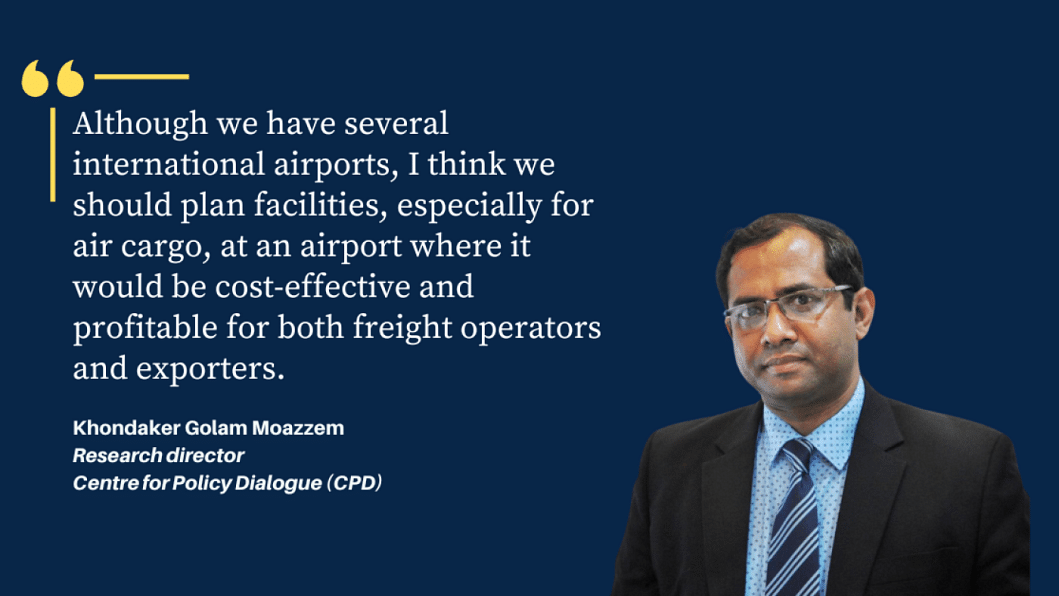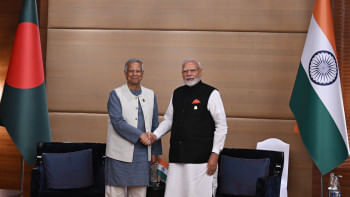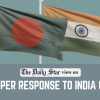Bangladesh's export dilemma post-transshipment ban

Khondaker Golam Moazzem, research director at the Centre for Policy Dialogue (CPD), talks with Naznin Tithi of The Daily Star about India's decision to revoke transshipment facility for Bangladesh and its implications.
How would you assess India's sudden decision to revoke the transshipment facility for Bangladesh?
The formal explanation provided by the Indian side is that, since Bangladeshi exports are increasing through Indian ports, their own exports are facing additional time and cost burdens. Therefore, they decided not to continue with this arrangement. Before making this decision, India could have discussed with Bangladesh that they were facing congestion and could not handle the increasing cargo volume, or that they could only allow a relatively lower cargo capacity from Bangladesh. However, as far as we know, no such discussion took place between the two countries. Therefore, it seems the decision was made suddenly. However, there could be other underlying reasons.
It was stated from India's side that they needed to consider the kind of decisions being made in Bangladesh. This implies that some bilateral issues or decisions were involved, which, to some extent, were political. For example, even before the transshipment revocation decision was made, discussions were ongoing in Bangladesh regarding the impact of Indian yarn imports through land ports on the local textile industry. Indian yarn was allegedly being under-invoiced, and as a result, large quantities were entering with little or no duty, making it difficult for domestic textile owners to remain competitive in the market. Therefore, they requested the government to redirect yarn imports through seaports instead of land ports.
From India's perspective, it may seem that Bangladesh was trying to discourage imports. But from our perspective, importing by sea will increase costs, putting financial pressure on yarn users. The discussion was ongoing, but the decision was implemented after India announced the closure of transshipment. Another concern from the Indian side was whether there was any intention on our part to facilitate yarn imports from a third country. In fact, the announcement to use seaports for yarn imports was made at a time when representatives from other countries were visiting Bangladesh. Therefore, I believe both economic and political factors might be behind this decision.
How will this decision affect our RMG sector, especially when Bangladeshi goods, including readymade garments, are currently facing higher tariffs in the US market?
The transshipment facility allowed many of our goods, especially those requiring quick delivery to the market, to be exported through Indian ports. Dhaka airport's loading and handling capacity was becoming overburdened compared to demand. The airport was not adequately equipped to manage the increasing load. Indian ports helped alleviate some of this pressure. Additionally, when Chattogram port became congested, Indian ports served as an alternative. Now that this option is no longer available, shipping these products will take more time, and air shipments will be further delayed. Another challenge is that air cargo planes face relatively high costs when landing in Dhaka to transport goods. The reason is that the volume of goods leaving Dhaka by air cargo is high, but the volume of goods arriving in Dhaka is relatively low. As a result, planes often arrive empty, which increases costs. In contrast, at Indian airports, there is demand for both incoming and outgoing cargo, making them comparatively cheaper for air carriers. Now that shipments must go through Bangladesh, costs will also rise. So, our entrepreneurs will have to accept these increased costs and continue shipments. Until our internal capacity improves, they might also opt to send products by sea if feasible or reduce orders for those types of goods that require short delivery windows and yield high profit margins.
How can we improve our internal capacity? Will the third terminal at HSIA, once operational, enhance our capacity to export goods directly to other countries?
For building capacity, I think we need to focus on one specific airport. Although we have several international airports, I think we should plan facilities, especially for air cargo, at an airport where it would be cost-effective and profitable for both freight operators and exporters. If our air cargo carriers could bring in some goods, it would be more economical for them. However, they will likely arrive almost empty and leave with a full load. In that case, they will charge for both ways, which would be costly. So, considering all that and our current capacity, I think if we plan future expansion focusing on one port, it should be Shahjalal Airport.
Regarding the third terminal, if it is completed by the end of the year, its capacity must be evaluated. Besides, our current capacity should also be assessed to determine how much expansion is required. For cargo planes landing and handling, additional facilities might be needed. The sheds seem small, so loading, carrying, sorting, and dispatching facilities may require upgrades. To ensure all these improvements, the government will need investment. I think, if we can negotiate with foreign donor agencies, they might be willing to provide funds. However, it is also true that Bangladesh's air cargo handling facility does not meet international standards. Since the goods being transported will be time-sensitive, the port handling facilities must comply with international standards.
What other alternatives do we have?
Using other ports might not be sustainable, considering their low usability by exporters. Goods based in Chattogram could be handled through Chattogram airport, but if those goods need to be transported from Dhaka, the cost will significantly increase. Therefore, in terms of existing infrastructure, it would be relatively easier and quicker to upgrade Shahjalal Airport. If the third terminal is opened quickly, only a limited investment might be needed. However, businessmen might have to accept the additional costs to keep operations running, as products shipped by air are usually short-duration goods with slightly higher margins. Additionally, if for any reason shipments by sea are delayed, air cargo remains an alternative option.
Earlier, the government had taken an initiative to convert old passenger aircraft of Biman Bangladesh Airlines into cargo planes. Possibly one aircraft was modified. However, since this plane was repurposed, it was not fully optimised for cargo. Moreover, strategically, using converted aircraft for cargo is not a good idea. But buying a new aircraft for Biman is also not advisable. Instead, if rental agreements can be made on a long-term basis with neighbouring or regional countries, and feasibility studies indicate their interest in carrying cargo from Bangladesh, then that could be considered.
India has been among the top trading partners of Bangladesh. How will this sudden policy change impact our bilateral relationship?
Recently, several issues have unfolded in a way that has created political tensions between the two countries, affecting both people-to-people relationships and government-to-government relations. Indian visa restrictions, for example, have contributed to this tension. Besides, many political and economic decisions have been made involving various countries, and India may have different perspectives on these decisions and find them concerning. Therefore, we need to consider whether we are adequately addressing these concerns while making such decisions. However, during the previous government's tenure, Bangladesh-India relations showed weakness in fairly considering the interests of both parties. We expect fair treatment from India.
Against the backdrop of Bangladesh's new political reality, a kind of distance is increasingly developing between Bangladesh and India. I think this will impact not only our economic or trade relations but also political ties and relations involving third countries like Nepal and Bhutan. Many of our engagements with India are no longer just about trade in goods. For instance, we are now importing electricity from Nepal through India. In the regional context, where interdependence is increasing, India remains an important partner. I think Bangladesh must take these dynamics into account while making future decisions so that people-to-people contacts, trade, investment, and social sector relations, such as education and healthcare, as well as all important bilateral or trilateral engagements are preserved and strengthened.
Follow The Daily Star Opinion on Facebook for the latest opinions, commentaries and analyses by experts and professionals. To contribute your article or letter to The Daily Star Opinion, see our guidelines for submission.


 For all latest news, follow The Daily Star's Google News channel.
For all latest news, follow The Daily Star's Google News channel. 










Comments